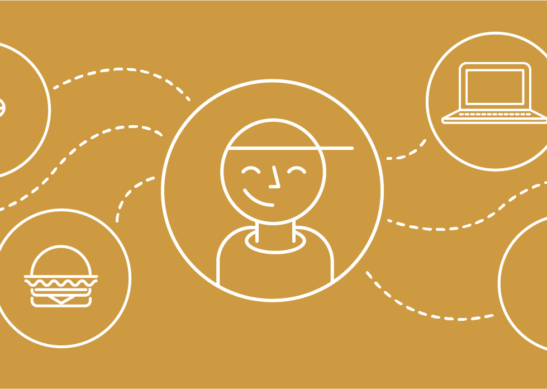
How Brands Will Measure Effectiveness in the Cookieless Future
Not only will the cookieless future introduce a new way of marketing on the web, but it will also alter how brand advertisers understand the effectiveness of their ad campaigns and optimize their media investments.
Taking stock of the potential solutions, advertisers will have to get comfortable with less information. But, that does not make it less effective for brand advertisers to invest in the web. Marketers will be able to infer performance in building awareness and brand perceptions where measurable to have insight and confidence in optimizing ad spend allocations.
In the second of this two-part series, Rachel Parkin, CafeMedia‘s EVP of strategy and sales, covers the implications for how marketers measure the effectiveness of advertising campaigns. (Part One covers implications for reaching customers.) Since the replacement technologies are still evolving and changing, let‘s first break down what will change or go away with the loss of third-party cookies. Then, we‘ll highlight what we know today about achieving those same outcomes in the future.
Advertising functions that will change
- Measuring reach and frequency
For most brand advertisers, the first step in understanding and managing the benefits of advertising is measuring the reach of people who saw an ad and controlling the frequency of exposure to that ad. Third-party cookies have served as the counters that track exposure. Without them, every user appears as a “new” user and it will be impossible for advertisers to have control over frequency caps. It also means that cross-site or total campaign reach will need to be estimated or modeled vs. directly inferred.
- Measuring media effectiveness
The most important aspect of developing an effective media strategy is understanding which tactics are driving the most value for advertisers. Most attribution models rely on data from third-party cookies to shed light on the total consumer journey, matching the sites where a user saw ads (or clicked through from) with the interactions and engagement with the advertiser‘s content and products. Without third-party cookies, the amount of data available to establish those customer journeys will dramatically decrease and the delay in getting information about consumer behavior will dramatically increase, diminishing insight into advertisers‘ returns on media investments.
What we know about forthcoming replacements
- Measuring reach and frequency
There are a lot of open questions about how global frequency and reach management will work in the future and the path forward is a bit murky. Brand advertisers should be prepared to adapt, as the same level of detail likely will not be available even with best efforts. Google acknowledges that this is an important advertiser need that the Privacy Sandbox will have to address, so more solutions should be forthcoming.
Pending more details on new technologies and knowing that advertisers are equally blind to Safari and Firefox users, let‘s consider other alternatives to help advertisers spread their message without overwhelming consumers. One thing to bear in mind is that the open web is vast, so even without cookie-based frequency caps, brand advertisers marketing to large groups of potential customers are not likely to overburden the same consumer. Advertisers should test this today to understand what organic frequency fallout looks like.
Advertisers can work directly with publishers to implement frequency capping to at least minimize over-frequency within a given website (or portfolio of sites), as they already are on direct-sold campaigns today. Some ecosystem enhancements would be needed, however, to apply publisher-specific logic to programmatic campaigns.
The adoption of identity solutions could present another means to limit frequency, but this would severely cap scale to only “identified” users and may increase the price of advertising to this group as this will be a limited pool of inventory.
Measuring the universe of customers reached through a campaign will require extrapolation moving forward; advertisers have to get comfortable with the idea of estimation over exact counts. This applies to both the number of times a consumer sees an ad and the number of consumers who see an ad, as there isn‘t currently a perfect process to connect all the different devices in a household up to the individual level either. To the extent that cross-device activity in the Chrome browser could serve as a proxy for other browsers, digital can follow the long-standing model for TV, which approximates reach from a small, known panel.
- Measuring media effectiveness
Regardless of the end state for media measurement, brand advertisers will have to get comfortable with campaigns not being perfectly measurable. That means advertisers will need to apply insights from “known” environments to unknown environments if they want to reach all potential consumers.
In the future, digital conversion measurement is likely to move from a single-source viewpoint toward a modeled perspective that takes different pieces of information from different sources. There are proposals on the table to enable access to something akin to an event log, which will include support for view-through conversions. What‘s changing is that these logs will vary based on the sensitivity or privacy of the data included and will factor in “noise” to prevent individual identification. Data is also likely to be delayed by a brief time period (typically 24–36 hours) and may require a minimum number of actions before extraction. Advertisers will then be able to piece together information at different levels of aggregation into media mix models that unpack which tactics work best. For a brand advertiser whose first priority is building brand consideration, real-time optimizations are less critical and directional insights should be more than enough.
Closed-loop measurement might be possible for portions of a campaign. Identity solutions and the growth of logged-in consumers may also enable the same brand and sales-lift studies advertisers are already conducting today on a smaller sample of users exposed to the campaign. Extrapolating those insights to the campaign as a whole can provide the same deep insights advertisers are used to. Over the years, many brand-lift studies moved toward panel frameworks, which could still be feasible if there‘s enough overlap of logged-in users who have been exposed to an ad. Like with publishers’ first-party data, advertisers may also find publishers now have more controls to deliver their own brand-lift studies using first-party identifiers, which could increase the pool of people who could respond. Or, live intercept studies could become more prominent again as a means for advertisers to understand the impact of campaigns at the moment when an ad is delivered.
How worried should brand advertisers be?
Clarity on the future of digital media measurement is mixed, pun intended. With what we know about how measurement is evolving, there isn‘t going to be a silver bullet that works for all browsers and all consumers. Brand advertisers will — as they have for years in TV and other channels — need to piece together a fuller picture using every available pocket of insight. Marketers don‘t need to panic about achieving the same performance in web-based buying; it will just need to be viewed through a different lens.


